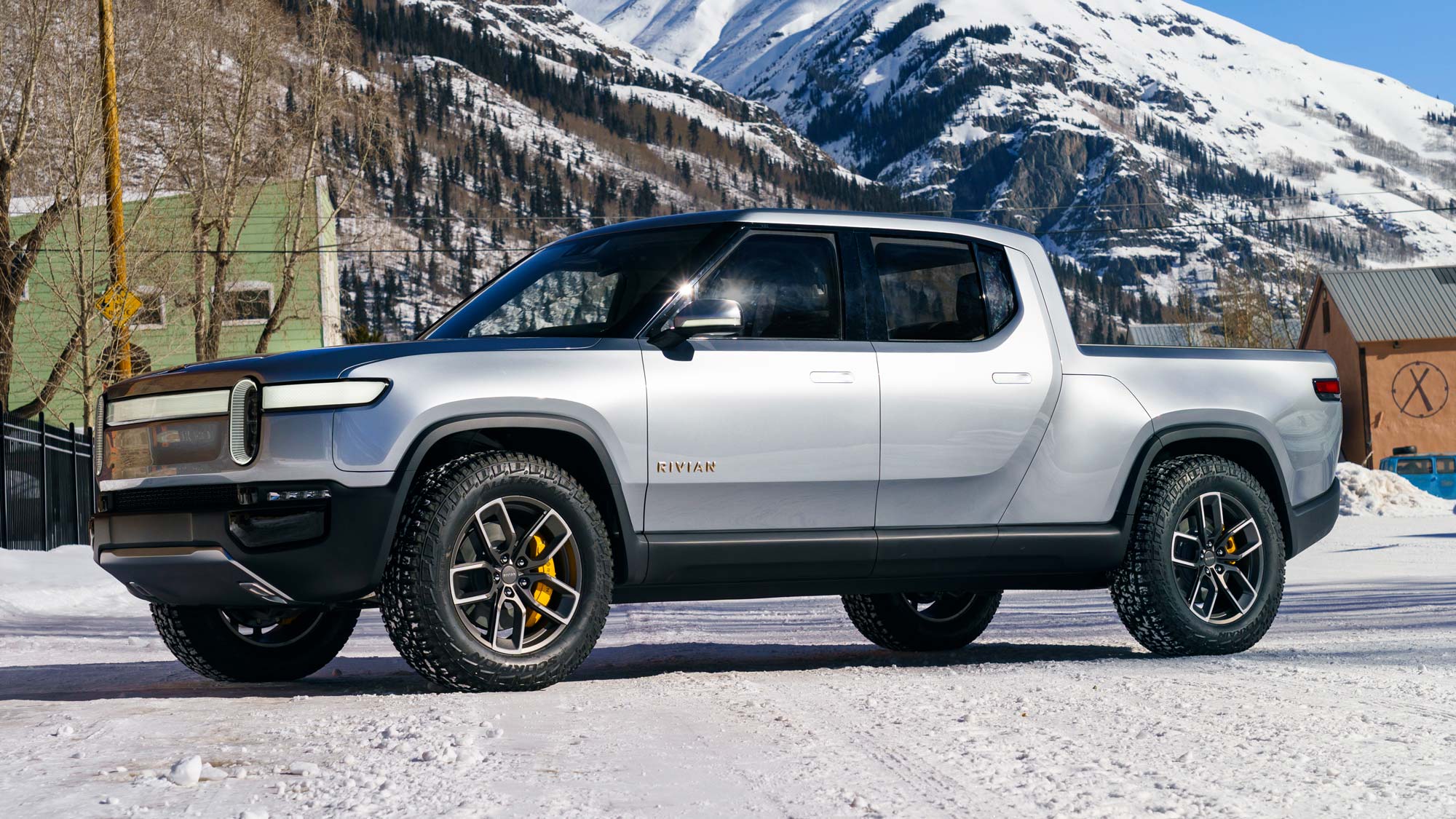Self-driving cars will be way too pricey for most people — and this proves it
$10,000 for an autonomous driving system? Rivian thinks people would pay it

Autonomous car tech is becoming more commonplace, which is great news for those of us that want to ease the burden of driving. But it’s looking like that the tech isn’t going to come cheap, and Rivian’s the latest example of that in action.
According to filings related to Rivian’s recent IPO, the cost of the company’s autonomous tech is set to be $10,000 — the same as Tesla's ‘Full Self Driving’ Autopilot. These filings also suggest connectivity services will cost $550 a year, which is pretty expensive if you ask me.
- Everything you need to know about the Rivian R1T electric truck
- Self-driving cars: Here's what the autonomous driving levels mean
- Plus: Google Maps is getting a major upgrade for cyclists
All this information was revealed in a S-1 Document Rivian filed when it filed for its initial IPO on October 1. In that document is information about financials and pre-orders, including the long term revenue potential of Rivian vehicles.
According to Rivian, software accounts for $15,500 over a 10-year period. $10,000 of that comes from autonomous driving features, and the other $5,500 comes from a monthly subscription for “infotainment, connectivity, diagnostics, and other services”.
The fact Rivian seems to want to charge around $45 a month for premium connectivity services, when other companies like Tesla charge just $10 each month, is something to be a little concerned about. Though the fact that Rivian appears to have plans to sell an autonomous driving system for $10,000 is the big news there.
Fortunately, it isn’t likely that all autonomous driving features will be locked behind that paywall. Rivian’s website confirms that the Rivian Driver+ technology, a Level 2 autonomous system, is included as standard on all Rivian R1T and R1S vehicles. That includes automatic emergency braking, blind spot alerts, auto steering within a lane, adaptive cruise control and lane change assistance.
Naturally. being a Level 2 system means that the driver has to remain alert at all times, ready to take over at a moment’s notice.
These features are advertised on Rivian’s website, as is the promise that the system will get free over-the-air updates complete with new features. Which makes me wonder how Rivian hopes to gain $10,000 out of its autonomous driving systems.
Presumably, Rivian would offer something akin to Tesla’s tiered Autopilot system, with basic autonomous features available as standard and more advanced features locked away behind either a one-off payment or subscription.
After all, Tesla's Full Self Driving option comes with features like Highway Driving, which will navigate you from on-ramp to off-ramp autonomously, and useful features like auto-parking and the ability to summon a car out of a parking space.
Likewise it’s been speculated that Rivian has some major upgrades to its Driver+ system in the works. An R1T truck was spotted sporting a LiDAR rig on the roads of Palo Alto earlier this year, while Rivian itself makes no mention of LiDAR on its website. In fact, the R1T that’s available for pre-order now comes with cameras, radar, and ultrasonic sensors, but as far as we know there’s no LiDAR.
But whether we’re talking about extra features, or a totally revamped autonomous driving system (possibly even level 3’s eyes-off driving?), one thing is clear. Automakers know that autonomous driving tech has the potential to be rather lucrative. And when businesses know they can make money off something, they’re rarely willing to slap a low price tag on it.
Plus, as Elon Musk himself recently had to admit, self driving tech is hard. Especially when your end goal is developing something intelligent enough to drive without any human intervention. As the experts keep telling us, autonomous vehicles are going to have to be able to do more than just see what’s around them. They’re going to have to be able to react and make decisions based on what situations and circumstances they come across.
That’s the sort of thing that needs time and money to accomplish. And the more advanced autonomous driving systems have to be, the more time and money is going to be required. Automakers have to make that money back somehow, and charging for access to these features is the most obvious way to do it.
We’ve seen that already with Tesla, and the rapidly rising price of Autopilot add-ons. The Full Self Driving option cost just $5,000 in April 2019, and by October 2020 it had risen to the $10,000 price that is still around today. Elon Musk has even said that those price increases will continue as it adds more features to the Autopilot service.
The FSD price will continue to rise as the software gets closer to full self-driving capability with regulatory approval. It that point, the value of FSD is probably somewhere in excess of $100,000.May 18, 2020
Though in his typical hyperbolic style, Musk valued the add-on at $100,000 once it closes in on actual autonomy. As in the kind that would negate any requirement for a human driver to be present and conscious.
The biggest challenge is making sure a car is able to drive itself, that much is obvious. But just because a car can drive autonomously doesn’t mean you’ll be able to afford one. In fact, the next challenge would be making sure the price is low enough that the average driver is able to purchase one. Because we can’t all rely on autonomous ride-sharing services to pick up the bill.
- More: The best electric cars on the road right now
Sign up to get the BEST of Tom's Guide direct to your inbox.
Get instant access to breaking news, the hottest reviews, great deals and helpful tips.

Tom is the Tom's Guide's UK Phones Editor, tackling the latest smartphone news and vocally expressing his opinions about upcoming features or changes. It's long way from his days as editor of Gizmodo UK, when pretty much everything was on the table. He’s usually found trying to squeeze another giant Lego set onto the shelf, draining very large cups of coffee, or complaining about how terrible his Smart TV is.
